 We understand that some of our clients may have a preference as to choosing a female or a male doctor – especially if seeking treatment for moles, skin tags or warts in intimate areas.
We understand that some of our clients may have a preference as to choosing a female or a male doctor – especially if seeking treatment for moles, skin tags or warts in intimate areas.
Not a problem, Cosmedics Skin Clinics has a wide team of doctors at our London clinics and we are here to help by finding you the doctor most suited to your requirements.
Every patient is an individual with their own needs and concerns. We understand that there are many reasons why you might want to choose a female doctor:
- Comfort: Some women feel more comfortable talking about their skin health with a female doctor. They may feel happier about sharing private information and that a female doctor will be more understanding and empathetic to their concerns.
- Communication: Some women feel that they can communicate better with a female doctor. They may feel that a female doctor will be more likely to listen to their concerns and answer their questions.
- Shared anatomy: Some women feel that they can relate better to a female doctor because they have shared anatomy and experiences.
- Examination: When seeking diagnosis and treatment for genital, anal or vaginal moles warts or skin tags, you may feel happier having examination by a female doctor.
- Trust: Some women perceive that a female doctor would relate to patients on a more personal level, making it easier for them to trust her. A trusting relationship between a patient and doctor is essential, especially when dealing with sensitive issues.
- Cultural and religious beliefs: Some women may feel uncomfortable with being seen by a male doctor for cultural or religious reasons.
Ultimately, the decision of whether to see a male or female doctor is a personal one. At Cosmedics Skin Clinics, our male doctors are all highly trained and experienced. However, if you have a preference for a female doctor, then simply ask and we’ll do our best to recommend the most appropriate practitioner.
Skin Lesions in Embarrassing Areas for Women
Blemishes or skin lesions in embarrassing areas could include:
- Genital Warts: Genital warts are a symptom of HPV (human papillomavirus). They tend to appear in a patch with several lumpy bumps of skin. HPV is a very common sexually transmitted disease. When genital warts appear, they can be very irritating and can cause pain, discomfort, and itching; although sometimes they are only annoying in a cosmetic way due to their appearance (which in itself can cause great concern). Genital warts can also be embarrassing and cause awkwardness with partners.
- Vaginal Skin Tags: Vaginal skin tags are tiny flaps of skin that appear in the vaginal area. They are thought to develop due to friction i.e. clothing or rubbing skin causing overgrowth of the skin, which develops into protruding skin tags. They can sometimes develop during pregnancy or as a consequence of weight gain. Skin tags are not contagious at all, but their appearance can be very upsetting and worrying for clients.
- Anal Skin Tags: Anal skin tags are small, harmless growths of skin that protrude from the anal area. They can vary in size and shape, and may be smooth or wrinkled. They are not a serious medical condition unless they become painful or interfere with bowel movements or hygiene. They can also be embarrassing, which can be a big factor in wanting to get rid of them.
- Moles: Moles can appear anywhere on the face or body – even in areas never exposed to the sun. They can appear in the groin and areas normally hidden by underwear. It is essential to have any suspicious mole checked to ensure that it is not cancerous. Suspicious signs include changes in the size, shape or colour, or itching or bleeding.
For a confidential assessment and discussion about the most appropriate treatment, please book an appointment at one of our clinics.
Book an Appointment
London Mole Removal Centre offer appointments at a choice of 5 private skin treatment centres based in London and Bristol. All consultations and treatments are carried out in person by doctors who are specially trained in the latest laser and skin surgery techniques and are highly experienced in the field. Most skin lesions can be removed at the same appointment as the consultation, but there is no obligation to proceed unless and until both the patient and doctor are completely happy to do so.
For more information or to book a consultation, please complete the form on this web page or call 020 7731 3791.

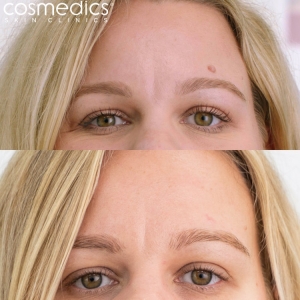 Two weeks later, Esther’s before and after photos show that the wound has healed very well indeed, as there is very little evidence of the mole having been there. The pinkness will fade further with tim.
Two weeks later, Esther’s before and after photos show that the wound has healed very well indeed, as there is very little evidence of the mole having been there. The pinkness will fade further with tim.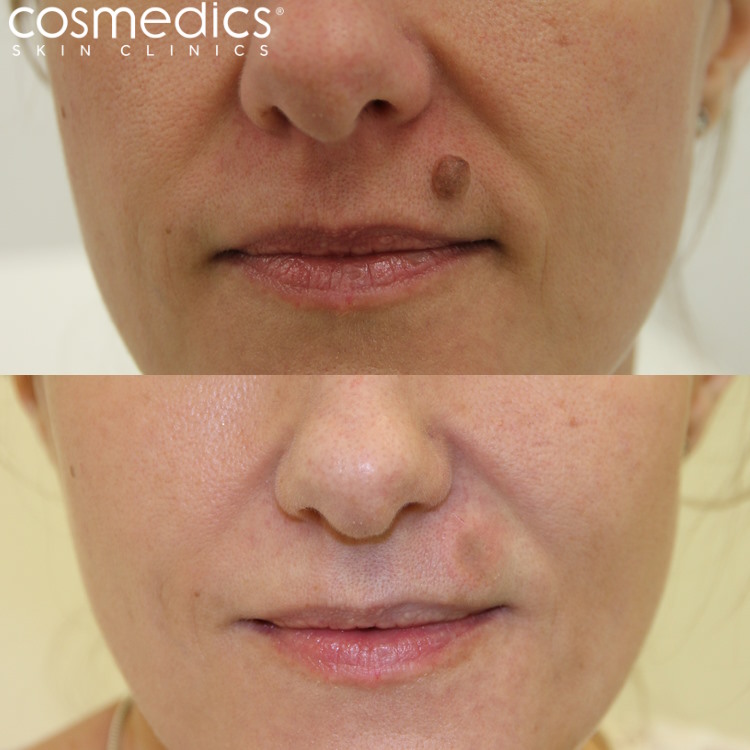
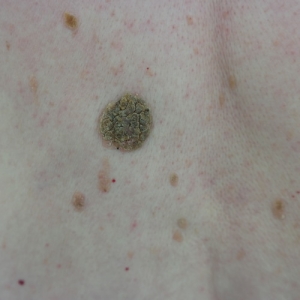 A seborrhoeic keratosis can be quite a worrying skin blemish.
A seborrhoeic keratosis can be quite a worrying skin blemish.  As seen in Sheerluxe
As seen in Sheerluxe Dr Ross Perry is Founder and Medical Director of the London Mole Removal Centre. He works in the NHS as a GP and skin cancer reconstruction expert as well as providing mole checks and mole removal at Cosmedics’ London Mole Removal Centres.
Dr Ross Perry is Founder and Medical Director of the London Mole Removal Centre. He works in the NHS as a GP and skin cancer reconstruction expert as well as providing mole checks and mole removal at Cosmedics’ London Mole Removal Centres.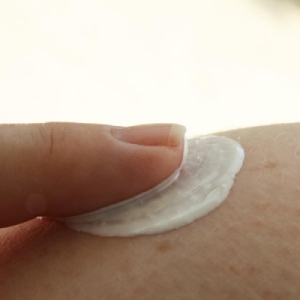 The USA-based FDA (Food and Drug Administration) has issued a warning to consumers and manufacturers about skin tag and mole removal products.
The USA-based FDA (Food and Drug Administration) has issued a warning to consumers and manufacturers about skin tag and mole removal products.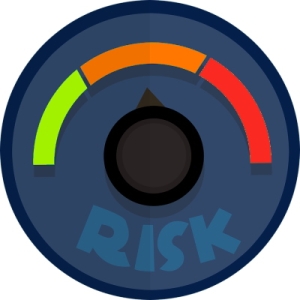 Worrying moles
Worrying moles Genital warts are a condition feared by many women. So how do you know if you have them?
Genital warts are a condition feared by many women. So how do you know if you have them?